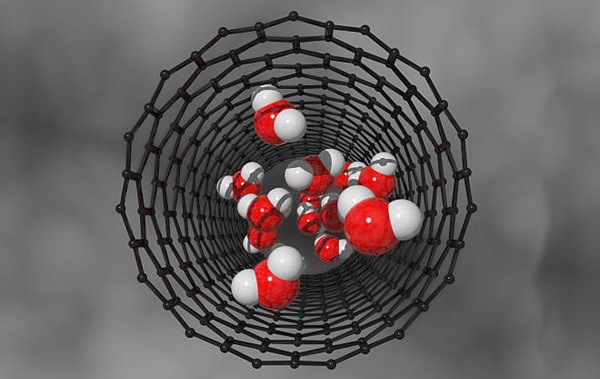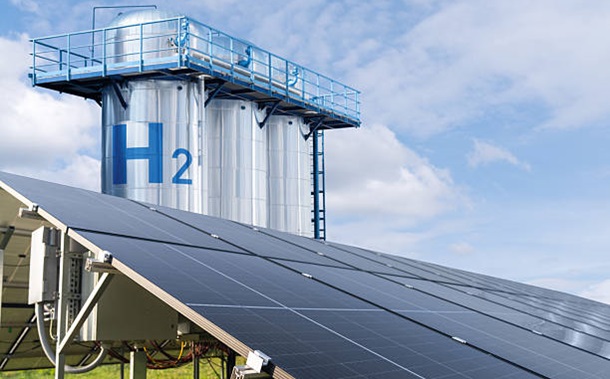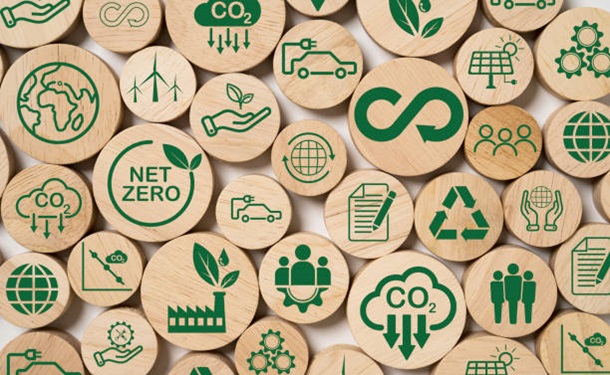Assessment of the Development of the Circular Economy in the EU Countries: Comparative Analysis by Multiple Criteria Methods
Downloads
Doi:10.28991/ESJ-2024-08-02-013
Full Text:PDF
Downloads
ERU-Lex. (2022). Circular Economy Action Plan. Communication from the Commission to the European Parliament, The Council, Brussels, Belgium.
European Commission. (2022). Measuring progress towards a Circular Economy - a monitoring framework for economy-wide material loop closing in the EU28. European Commission (EC), Brussels, Belgium. Available online: https://publications.jrc.ec.europa.eu/repository/handle/JRC110701 (Accessed on March 2024).
Smol, M. (2023). Inventory and Comparison of Performance Indicators in Circular Economy Roadmaps of the European Countries. Circular Economy and Sustainability, 3(1), 557–584. doi:10.1007/s43615-021-00127-9.
Konietzko, J., Bocken, N., & Hultink, E. J. (2020). A tool to analyze, ideate and develop circular innovation ecosystems. Sustainability (Switzerland), 12(1), 417. doi:10.3390/SU12010417.
The World Bank. (2022). World Bank Releases Its First Report on the Circular Economy in the EU, Says Decoupling Growth From Resource Use in Europe Achievable Within Decade. The World Bank, Washington, United States. Available online: https://www.worldbank.org/en/news/press-release/2022/12/06/world-bank-releases-its-first-report-on-the-circular-economy-says-decoupling-growth-from-resource-use-in-europe-achievab (accessed on March 2024).
Corona, B., Shen, L., Reike, D., Rosales Carreón, J., & Worrell, E. (2019). Towards sustainable development through the circular economy”A review and critical assessment on current circularity metrics. Resources, Conservation and Recycling, 151, 104498. doi:10.1016/j.resconrec.2019.104498.
De Oliveira, C. T., Dantas, T. E. T., & Soares, S. R. (2021). Nano and micro level circular economy indicators: Assisting decision-makers in circularity assessments. Sustainable Production and Consumption, 26, 455-468. doi:10.1016/j.spc.2020.11.024.
WBCSD. (2018). Circular metric landscape analysis. World Business Council for Sustainable Development (WBCSD), Geneva, Switzerland.
Moraga, G., Huysveld, S., Mathieux, F., Blengini, G. A., Alaerts, L., Van Acker, K., de Meester, S., & Dewulf, J. (2019). Circular economy indicators: What do they measure? Resources, Conservation and Recycling, 146, 452–461. doi:10.1016/j.resconrec.2019.03.045.
Cagno, E., Negri, M., Neri, A., & Giambone, M. (2023). One Framework to Rule Them All: An Integrated, Multi-level and Scalable Performance Measurement Framework of Sustainability, Circular Economy and Industrial Symbiosis. Sustainable Production and Consumption, 35, 55–71. doi:10.1016/j.spc.2022.10.016.
EASAC (2016). European Academies' Science Advisory Council, Cardiff, United Kingdom. Available online: https://easac.eu/fileadmin/PDF_s/reports_statements/Circular_Economy/EASAC_Indicators_web_complete.pdf (accessed on March 2024).
European Commission. (2018). On a Monitoring Framework for the Circular Economy. EU Monitor, Brussels, Belgium. Available online: https://www.eumonitor.eu/9353000/1/j9vvik7m1c3gyxp/vkl2lgcz44w4 (accessed on March 2024).
EIA. (2016). Climate change, impacts and vulnerability in Europe 2016. An indicator-based report, European Environmental Agency, Copenhagen, Denmark. Available online://www.eea.europa.eu/publications/climate-change-impacts-and-vulnerability-2016 (accessed on March 2024).
Cčƒutişanu, C., Asandului, L., Borza, M., & Turturean, C. (2018). Quantitative approach to circular economy in the OECD countries. Amfiteatru Economic, 20(48), 262–277. doi:10.24818/EA/2018/48/262.
Vranjanac, Ž., Rač‘enovič, Ž., Rač‘enovič, T., & Živkovič, S. (2023). Modeling circular economy innovation and performance indicators in European Union countries. Environmental Science and Pollution Research, 30(34), 81573–81584. doi:10.1007/s11356-023-26431-5.
Pinyol Alberich, J., Pansera, M., & Hartley, S. (2023). Understanding the EU's circular economy policies through futures of circularity. Journal of Cleaner Production, 385. doi:10.1016/j.jclepro.2022.135723.
Mazur-Wierzbicka, E. (2021). Circular economy: advancement of European Union countries. Environmental Sciences Europe, 33(1), 111. doi:10.1186/s12302-021-00549-0.
Stankovič, J. J., Jankovič-Milič, V., Marjanovič, I., & Janjič, J. (2021). An integrated approach of PCA and PROMETHEE in spatial assessment of circular economy indicators. Waste Management, 128, 154–166. doi:10.1016/j.wasman.2021.04.057.
Androniceanu, A., Kinnunen, J., & Georgescu, I. (2021). Circular economy as a strategic option to promote sustainable economic growth and effective human development. Journal of International Studies, 14(1), 60–73. doi:10.14254/2071-8330.2021/14-1/4.
Candan, G., & Cengiz Toklu, M. (2022). A comparative analysis of the circular economy performances for European Union countries. International Journal of Sustainable Development and World Ecology, 29(7), 653–664. doi:10.1080/13504509.2022.2084794.
Ostojic, P. (2016). Pumps and circular economy. World Pumps, 2016(1), 30–33. doi:10.1016/s0262-1762(16)30032-3.
Su, B., Heshmati, A., Geng, Y., & Yu, X. (2013). A review of the circular economy in China: Moving from rhetoric to implementation. Journal of Cleaner Production, 42, 215–227. doi:10.1016/j.jclepro.2012.11.020.
Vence, X., Pereira, A., & Laperche, B. (2022). Overcoming the Circular Economy Paradox through Innovation: Pitfalls in the Transition Pathways. Journal of Innovation Economics & Management, 39(3), 1–13. doi:10.3917/jie.039.0001.
Ogunmakinde, O. E., Sher, W., & Egbelakin, T. (2021). Circular economy pillars: a semi-systematic review. Clean Technologies and Environmental Policy, 23(3), 899–914. doi:10.1007/s10098-020-02012-9.
Oliveira, M., Miguel, M., van Langen, S. K., Ncube, A., Zucaro, A., Fiorentino, G., Passaro, R., Santagata, R., Coleman, N., Lowe, B. H., Ulgiati, S., & Genovese, A. (2021). Circular Economy and the Transition to a Sustainable Society: Integrated Assessment Methods for a New Paradigm. Circular Economy and Sustainability, 1(1), 99–113. doi:10.1007/s43615-021-00019-y.
Kaplan, Y. (2022). How to achieve an institutional change towards circular economy? A comparative case study on the EU and China. Globalizations, 19(8), 1346–1363. doi:10.1080/14747731.2022.2068235.
Roos Lindgreen, E., Opferkuch, K., Walker, A. M., Salomone, R., Reyes, T., Raggi, A., Simboli, A., Vermeulen, W. J. V., & Caeiro, S. (2022). Exploring assessment practices of companies actively engaged with circular economy. Business Strategy and the Environment, 31(4), 1414–1438. doi:10.1002/bse.2962.
Memarpour Ghiaci, A., & Jafarzadeh Ghoushchi, S. (2023). Assessment of barriers to IoT-enabled circular economy using an extended decision- making-based FMEA model under uncertain environment. Internet of Things, 22, 100719. doi:10.1016/j.iot.2023.100719.
Durmanov, A., Saidaxmedova, N., Mamatkulov, M., Rakhimova, K., Askarov, N., Khamrayeva, S., ... & Kurbanova, K. (2023). Sustainable growth of greenhouses: investigating key enablers and impacts. Emerging Science Journal, 7(5), 1674-1690. doi:10.28991/ESJ-2023-07-05-014.
OECD. (2021). The OECD Inventory of Circular Economy indicators. Organisation for Economic Co-operation and Development, Paris, France, Available online: https://www.oecd.org/cfe/cities/InventoryCircularEconomyIndicators.pdf (accessed on August 2023).
Saidani, M., Yannou, B., Leroy, Y., & Cluzel, F. (2017). How to assess product performance in the circular economy? Proposed requirements for the design of a circularity measurement framework. Recycling, 2(1). doi:10.3390/recycling2010006.
Kusumo, F., Mahlia, T. M. I., Pradhan, S., Ong, H. C., Silitonga, A. S., Fattah, I. M. R., Nghiem, L. D., & Mofijur, M. (2022). A framework to assess indicators of the circular economy in biological systems. Environmental Technology & Innovation, 28. doi:10.1016/j.eti.2022.102945.
Ginevičius, R. (2009). Some problems of quantitative evaluation of the state of social-economic systems. Business: Theory and Practice, 10(2), 69–83. doi:10.3846/1648-0627.2009.10.69-83.
Sassanelli, C., Rosa, P., Rocca, R., & Terzi, S. (2019). Circular economy performance assessment methods: A systematic literature review. Journal of Cleaner Production, 229, 440–453. doi:10.1016/j.jclepro.2019.05.019.
Ginevi, R., & Podvezko, V. (2004). Quantitative Assessment of Regional Development. Environmental Research, Engineering and Management, 1(1), 10–14.
Bielinskas, V. (2019). Evaluation of scenarios for the change of purpose of urban brownfields using multi-indicator decision-making methods. Doctoral dissertation. Vilnius: Technika. doi:10.20334/2019-001-m. (In Lithuanian).
Boggia, A., & Cortina, C. (2010). Measuring sustainable development using a multi-criteria model: A case study. Journal of Environmental Management, 91(11), 2301–2306. doi:10.1016/j.jenvman.2010.06.009.
Boggia, A., Rocchi, L., Paolotti, L., Musotti, F., & Greco, S. (2014). Assessing Rural Sustainable Development potentialities using a Dominance-based Rough Set Approach. Journal of Environmental Management, 144, 160–167. doi:10.1016/j.jenvman.2014.05.021.
Tvaronavičienč—, M., Ginevičius, R., & Grybaitč—, V. (2008). Comparison of the development of the Baltic countries: practical aspects of the application of the complex approach. Business: Theory and Practice, 9(1), 51–64. doi:10.3846/1648-0627.2008.9.51-64. (In Lithuanian).
Dasgupta, P. (2007). Measuring sustainable development: Theory and application. Asian Development Review, 24(1), 1–10. doi:10.1142/s0116110507000012.
Tamošaitienč—, J. (2009). Multi-objective assessment of management decisions at the construction planning stage. Ph.D. Thesis, Technika, Vilnius, Lithuania.
Ginevičius, R., Gedvilaitč—, D., Stasiukynas, A., & Š liogerienč—, J. (2018). Quantitative Assessment of the Dynamics of the Economic Development of Socioeconomic Systems Based on the MDD Method. Engineering Economics, 29(3), 264–271. doi:10.5755/j01.ee.29.3.20444.
Zavadskas, E. K., & Podvezko, V. (2016). Integrated determination of objective criteria weights in MCDM. International Journal of Information Technology & Decision Making, 15(2), 267–283. doi:10.1142/S0219622016500036.
Luan, W., Lu, L., Li, X., & Ma, C. (2017). Weight determination of sustainable development indicators using a global sensitivity analysis method. Sustainability, 9(2), 303. doi:10.3390/su9020303.
Zavadskas, E. K., & Turskis, Z. (2011). Multiple criteria decision making (MCDM) methods in economics: An overview. Technological and Economic Development of Economy, 17(2), 397–427. doi:10.3846/20294913.2011.593291.
Hwang, C.-L., & Yoon, K. (1981). Multiple attribute decision making: methods and applications: a state-of-the-art survey. Springer, Berlin, Germany. doi:10.1007/978-3-642-48318-9.
Lapinskienč—, G., Podviezko, A., & Tvaronavičienč—, M. (2023). The State Of International Technology Transfer In The Northern Europe Region: Comparative Analysis By Modern Multiple Criteria Methods. Acta Montanistica Slovaca, 28(1), 69–82. doi:10.46544/AMS.v28i1.07.
- This work (including HTML and PDF Files) is licensed under a Creative Commons Attribution 4.0 International License.




















